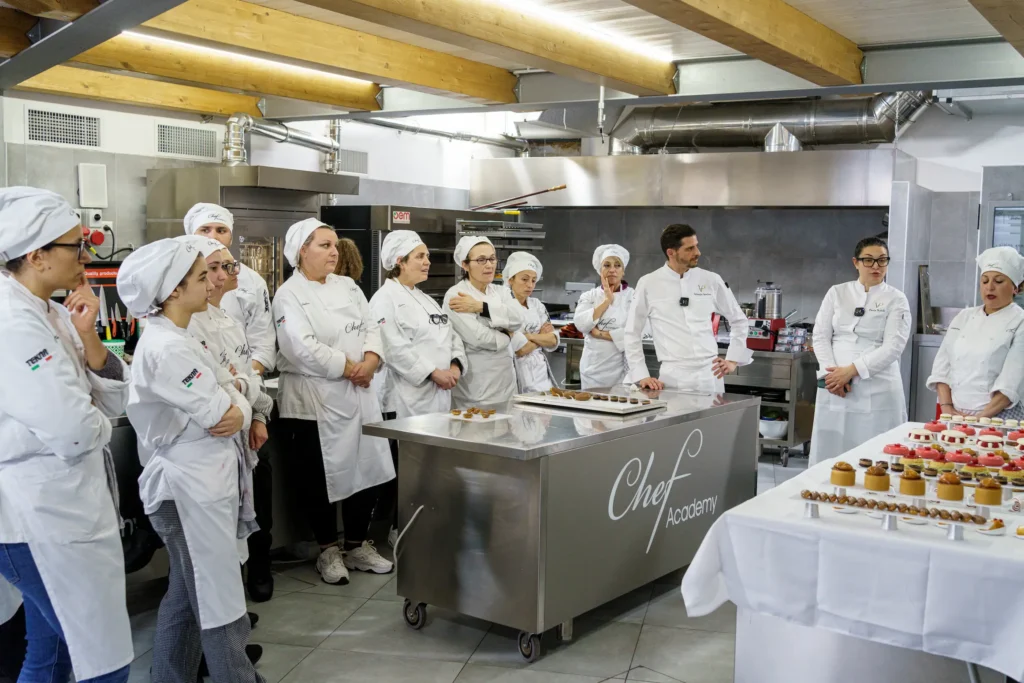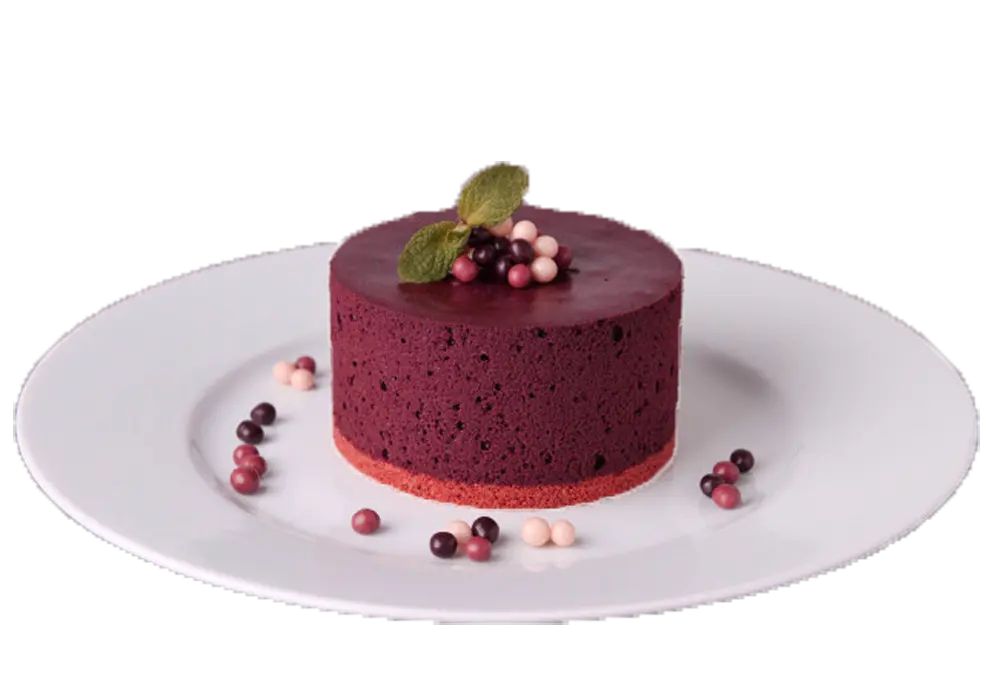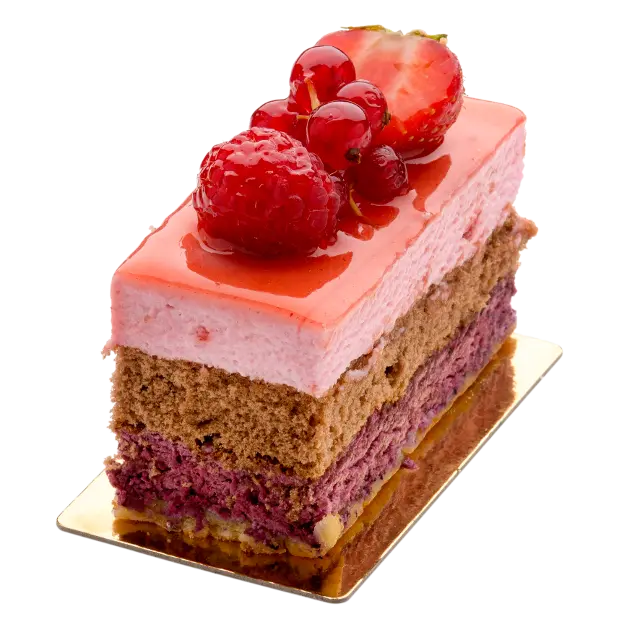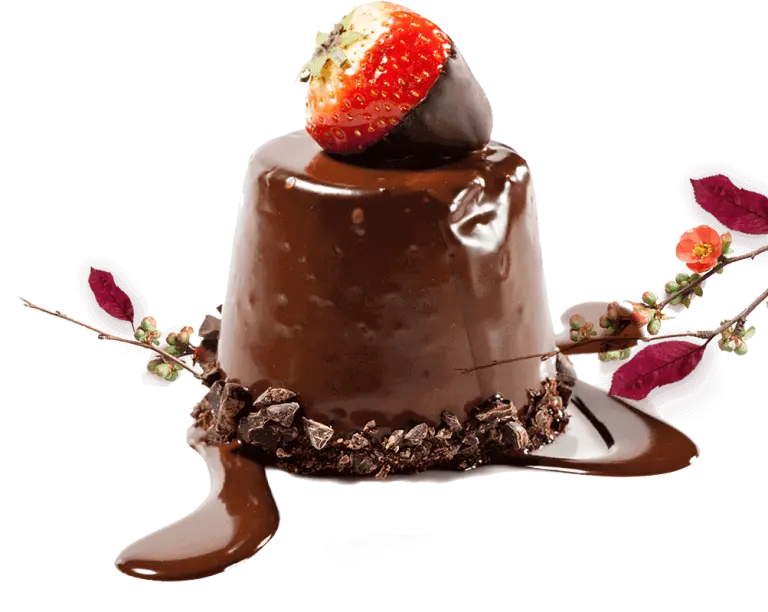What is puff pastry ?
Puff pastry begins with a water dough, known as détrempe, made from a simple mixture of water and flour. Fat, such as dry butter or margarine, is then incorporated into the dough through a process of turning or folding. The layering of détrempe and fat during this laminating process allows water to evaporate when baked, resulting in the lifting of individual layers and imparting the pastry with its distinct qualities of crispiness, flakiness, and lightness.
Alternatively, employing a brioche-type dough in this technique leads to a different outcome. The presence of fresh yeast in the dough causes it to puff and rise during baking. This leavened laminated dough is commonly utilized in the creation of Viennese pastries such as croissants, pains au chocolat, oranais, and others.
The History of puff Pastry
Puff pastry has ancient origins, likely originating with the Greeks around 2,000 to 3,000 BC and later adopted by the Romans and spread across regions by the Arabs and Crusaders. The earliest recorded recipe dates back to 1604. There’s a story suggesting Claude Lorrain, initially a pastry cook, may have conceived the idea of encasing butter within dough, although it’s debated by historians. François Pierre de La Varenne’s 1653 book describes a recipe involving multiple layers of butter and dough, marking a significant advancement in pastry-making techniques.
What to make with puff pastry ?
Puff pastry is incredibly versatile and can be used to create a wide variety of sweet and savory treats. Here are some delicious ideas:
Sweet Treats:
- Fruit Galette: Arrange sliced fruit, such as apples or peaches, on puff pastry, sprinkle with sugar and cinnamon, then fold the edges and bake until golden for a rustic and delicious dessert.
- Palmiers: Roll out puff pastry, sprinkle with sugar, and fold into palmier shapes before baking until caramelized and crispy.
- Apple Turnovers: Fill puff pastry squares with cinnamon-spiced apples, fold over, and seal before baking for a classic and comforting dessert.
- Napoleons: Layer puff pastry with pastry cream and fresh berries for an elegant and indulgent dessert.
Savory Dishes:
- Spinach and Feta Puffs: Fill puff pastry squares with a mixture of sautéed spinach, feta cheese, and garlic, then bake until golden brown.
- Chicken Pot Pie: Use puff pastry as a flaky crust for individual chicken pot pies filled with tender chicken, vegetables, and creamy sauce.
- Cheese Twists: Roll out puff pastry, sprinkle with grated cheese and herbs, then twist and bake until crispy for a simple yet tasty appetizer.
- Beef Wellington: Wrap a seasoned beef tenderloin in puff pastry for an elegant and flavorful main course.
- Vegetable Tart: Top puff pastry with roasted vegetables, such as tomatoes, zucchini, and bell peppers, along with herbed cream cheese for a colorful and savory tart.
These are just a few ideas to get you started, but the possibilities with puff pastry are endless. Get creative in the kitchen and experiment with different fillings, toppings, and shapes to create your own unique pastry creations!
Conclusion
As we conclude our journey through the world of puff pastry, we’ve explored traditional techniques and innovative variations, unlocking the secrets to mastering this versatile pastry. From the classic method of encasing butter within layers of dough to inventive twists like inverted puff pastry and André Guillot’s high-fat version, there’s a wealth of possibilities to explore. Whether you’re crafting savory delights like chicken pot pie or indulging in sweet treats like fruit galettes, puff pastry offers endless opportunities for culinary creativity. So roll up your sleeves, embrace the process, and let your imagination run wild as you elevate your baking game with the buttery, flaky perfection of homemade puff pastry.
To go further
To go further, let’s dig into our step-by-step guide that will help you achieve the perfect puff pastry.






